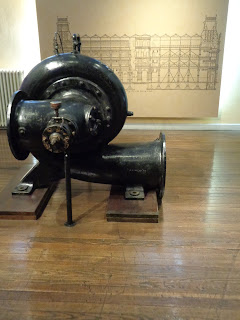 |
| Interior of the water works museum of the Water Company Palace, with pipes and tanks that held 72,000 tons of water for over 6 million people that lived in Buenos Aires in the 1920's. |
At the turn of the 20th Century, the Argentinian government was taking inspiration from the ancient Etruscans on how to provide sanitary water and sewage services for a city that became home to the over 3 million immigrants arriving in Buenos Aires between 1890 and 1910.
 |
| Sewage pump of the "cloaca maxima" in the water works museum of Buenos Aires |
The palace itself is a work of art, a display of French renaissance style and once covered in hundreds of thousands of glazed terra cota tiles that are now on display in the water works museum, located in the former water pumping station facility of the palace.
 |
| Exterior of the Water Company Palace, an architectural masterpiece of the late 19th Century. |


No comments:
Post a Comment